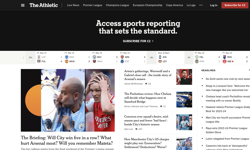Recent survey results published by the community media company, Chinwag, in their ‘Digital Pulse’ confidence index (tinyurl.com/5bsq5h), show the digital industry is wearing credit crunch concerns lightly, with an overall positive outlook on market conditions. Interestingly, online publishers are the least optimistic, with 36% giving a negative response. I would suggest these concerns stem from the ongoing challenges publishers face when trying to monetise their online content.
I would stress that it’s not all doom and gloom. Publishers should look at the opportunities in spite of, and even as a result of, the economic climate. As a trusted content provider, specialist publishers can establish themselves as an invaluable resource for negotiating the sluggish economy. There are plenty of success stories where publishers have strengthened their online presence and dramatically increased revenues.
So, how do you charge for your content when so much information is freely available online? How much should you give away? It has also quickly become evident that standard subscription and advertising revenue alone is not enough. There are lessons to be learnt from trying to take content online which are widely applicable. However, the correct approach to follow depends on the type of publisher. The suitability of certain tactics varies, for example for a business-to-business compared to a consumer publisher.
How to make money from content is a fundamental consideration for publishers and is a question that sparks wide ranging, ongoing debate. This two part feature aims to provide food for thought with ten dos and don’ts that we feel are particularly important. Here we address the underlying approach and how to get the most reward from your content. The follow up in the next issue will focus on engaging your audience and providing value for your readership.
The suggestions are based on our experience of the sector, but it’s by no means a definitive guide and the ten points are not in any set priority order.
1. Don’t underestimate the differences between print and web
Perhaps an obvious statement, but mistakes are being made by some publishers who don’t fully appreciate the differences. "...If publishers want to maximize value on the web, they have to put the web first every time... you can’t just take what you create for print and dump it on the web..." (Scott Karp, Publishing 2.0, June 2008: tinyurl.com/695rv6)
You have to put dynamic and up-to-date content front and centre, and not just re-publish your static print content.
People have different expectations and needs when browsing content online. Writing for web (see Jakob Nielsen’s ‘How Users Read on the Web’ - tinyurl.com/25vge) should focus on accessibility, usability, and search engine optimisation (SEO). You should adopt systems to easily update, schedule, and publish your content with minimal strain on internal resources. There are different opportunities online to link related content and media assets to give context, relevance, and provide a personalised and valuable reader experience. Good use of technology will enable you to deliver timely and relevant content to capture visitors looking for up-to-the-minute information.
Well researched search marketing campaigns will drive quality targeted traffic to the right content. It’s important to understand the differences but also to follow a unified approach for your print and online strategy. Your activity online can enhance rather than cannibalise your offline subscriptions.
2. Do find a mix of revenue streams
For the majority of publishers, subscriptions and display advertising are still the prime revenue sources. Publishing sites have enjoyed some success following a hybrid business model on this basis. However, for many it’s become apparent that you can’t rely on these revenue sources alone. You need to be creative in identifying other sources of revenue, such as repurposing existing content into new products.
Adopting more sophisticated and flexible subscription and pay-per-view models helps maximise the potential to monetise your content. A user may never buy a full subscription but might pay for a topic based report. Webinars, webcasts, forums, and reports, can all be charged for and sponsored. It’s also a good idea to offer group subscriptions or site licenses which generally have longer customer lifetimes.
You have to be creative and inventive about your product mix and messaging. Content from live events can be turned into premium training materials for those who couldn’t attend. Explore opportunities for virtual trade shows and conferences as people are finding travelling to events increasingly costly.
There are further opportunities to take advantage of online, with low barriers to entry, which can become invaluable supplementary revenue sources. This could include setting up a jobs board, or a premium business directory service.
As well as creating sponsorship opportunities from your product mix, it is worth looking at more varied and perhaps more lucrative advertising models. If you are attracting targeted quality traffic then working with advertisers on a cost per click, call, or acquisition basis, should drive more revenue. Despite sharing the risk versus a per impression CPM (cost per mille) model, advertisers will be willing to pay more for measurable quality leads.
3. Don’t hide everything behind a subscriber wall
It’s widely agreed that paid content thrives in niche sectors where good content is scarce. A glut of free content of poor quality makes paid credible information even more desirable. Providing content for free can drive traffic but how valuable are those visits compared to a targeted niche audience of subscribers and the direct revenue that generates? For most publishers, a combination of free and paid content is the answer.
It is important to show new visitors enough to demonstrate the quality and value of your content, to establish trust and credibility. If, around every corner, a visitor is confronted with a subscription wall, then you risk quickly losing that person through frustration. It is also essential to consider search engine visibility. If a person can’t access content without first registering or subscribing, then a search engine crawler can’t either.
In the May / June 2008 issue of InCirculation, Martin Ashford described the ‘frequency model’ approach recently adopted by the FT to provide a capped amount of free content after which point the user is invited to subscribe.
You should provide enough of an abstract, or a teaser for every premium article or report. Offering free trials, with strong calls-to-action and automated email efforts, encourages new readers to engage with the site. You should have the tools in place to report on active and passive trialists and organise targeted marketing accordingly to maximise conversions.
4. Do make your content work harder
Publishers should repurpose their content to achieve the best commercial benefit from it. Look at where any content currently exists within your organisation and try to get all your assets online. You may have legacy content that can be made freely available online to show visitors the breadth of coverage and experience, and help fuel search engine traffic. This content still has value in driving people to related, more recent, premium content. A/B split and multivariate testing will enable you to optimise landing pages to capture the search traffic and increase conversions.
A visitor to your site may well have a particular interest in a specific report relevant to their business needs but might have no interest in a full subscription or even a trial. A more flexible pay-per-view model will give you more chance of capturing this type of potential customer.
Re-package content into premium products and resources. A live stream video recording of an interview from an event can be made available to subscribers, and sold as a premium pay-per-view download on the website, and the audio made available separately to download on iTunes.
It’s also becoming increasingly accessible and cost effective to re-package content across multiple platforms and devices in different formats, for example for email, or mobile, all of which provide further opportunities for monetisation.
5. Don’t obsess over control
Online content is being increasingly disaggregated and syndicated with feeds and widgets (Wikipedia ‘Web Widget’ - tinyurl.com/33hvxx) on countless third party sites. ‘Aggregators’ (Wikipedia ‘Aggregator’ - tinyurl.com/6fc3qq) and ‘Mashups’ (Wikipedia ‘Mashup’ - tinyurl.com/9k63h) draw content from various sources. People want the content to come to them and to personalise their online experience. Social networks are becoming the next broadcasters, and with sites like iGoogle (www.google.com/ig) and Netvibes (www.netvibes.com), people are creating their own homepages. This raises some concerns for media owners over control, context and branding.
However, it’s worth looking at the opportunities. It is important to get your content in front of as large an audience as possible. Displaying your content in a sponsored widget on a blog can help strengthen your position as an authority publisher. RSS feeds help people monitor content they are interested in from numerous trusted sources. You can specify how much content is displayed but it is advisable to show a meaningful abstract. Using RSS, link-building, and social bookmarking helps increase your direct traffic, and search engine visibility.
Taking inbound feeds to re-publish on your own site also helps to reinforce your presence as an authority within your sector. Equally, opening the site up to user generated content (UGC) through, for example, article commenting, and forums, is something positive and presents many opportunities, so should not be feared.
The five principles above we feel are a good start point for publishers looking to improve their ability to drive revenue from their online activity. In part two of this feature, we will look at the opportunities and pitfalls to be aware of when attempting to leverage niche networks, the importance of producing quality original content, and how to take advantage of Web 2.0 and build communities around your content. We will also address how to listen to your readers, and how instilling a culture of testing can be extremely rewarding when attempting to achieve maximum commercial gain from your website.
No doubt many of you will have your own ideas on how best to approach online publishing, and will have success stories and lessons learned of your own. We would welcome continuing the debate, so please visit the InCirculation forum to discuss ideas.
| The second part of Angus’ article will appear in our September / October issue. |










